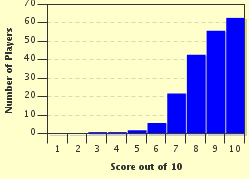Quiz Answer Key and Fun Facts
1. European folklore suggests that children are delivered to their parents by this strange-looking creature. The pictured bird is a member of which family of large, long-legged, long-necked wading birds?
2. You will often see these strange-looking wading birds in large groups, standing on one leg with the other tucked up under their body. This is the national bird of the Bahamas. The photo shows the long, corkscrew-like neck of which bird species?
3. The pictured bird is the smallest of all bird species, weighing less than a U.S. penny. Their name comes not from their call or song, but from the sound made by their rapidly-beating wings. Which bird is this?
4. Living on all continents except Antarctica and South America, there are 15 species within this bird family. Sounding a bit like something you would find on a building site, what are these large, long-legged, long-necked birds?
5. The third-largest flying bird in the Western Hemisphere, this is one of two similarly-named members of the vulture family. Noted for their bald heads, these birds are carrion eaters who do an important job within the ecosystem. Which bird is this?
6. There are around 90 species in this bird family. Common characteristics include large heads, sharp, pointed bills, short legs and stubby tails, and most members of the family also have bright, multi-coloured plumage. Which bird family is this?
7. The pictured bird is a member of a large family that gets its name from their most recognizable call. The family has a reputation as brood parasites, although not all species have this rather anti-social trait. Which bird is this?
8. The pictured bird is the most common of around 20 species within a single bird of prey genus. Although relatively small for a raptor, it is the main predator of small woodland birds. Which bird is this?
9. The pictured bird is one of six large-beaked, long-tailed, often colorful, New World members of the parrot family. Mostly found in tropical rainforests, they are also common in some woodland and savannah-like habitats. Which type of bird is this?
10. The pictured bird is a member of a large family of songbirds. Sometimes called chickadees, this is a stocky woodland-dwelling family notable for their short, stout bills. Which type of bird is this?
Source: Author
EnglishJedi
This quiz was reviewed by FunTrivia editor
NatalieW before going online.
Any errors found in FunTrivia content are routinely corrected through our feedback system.


